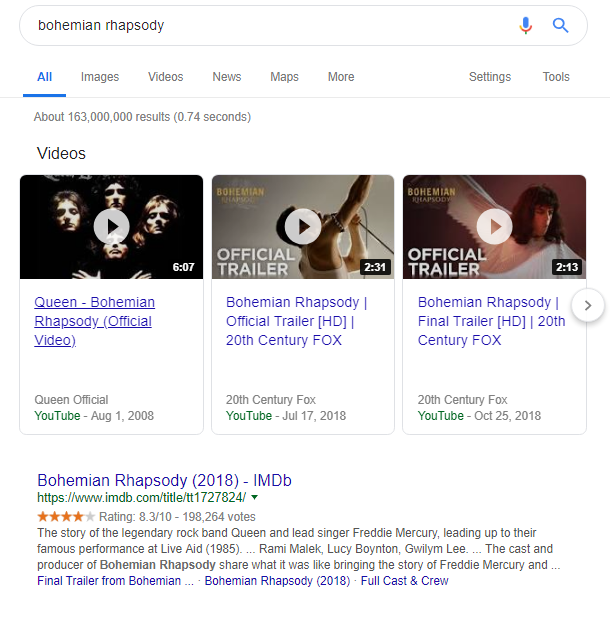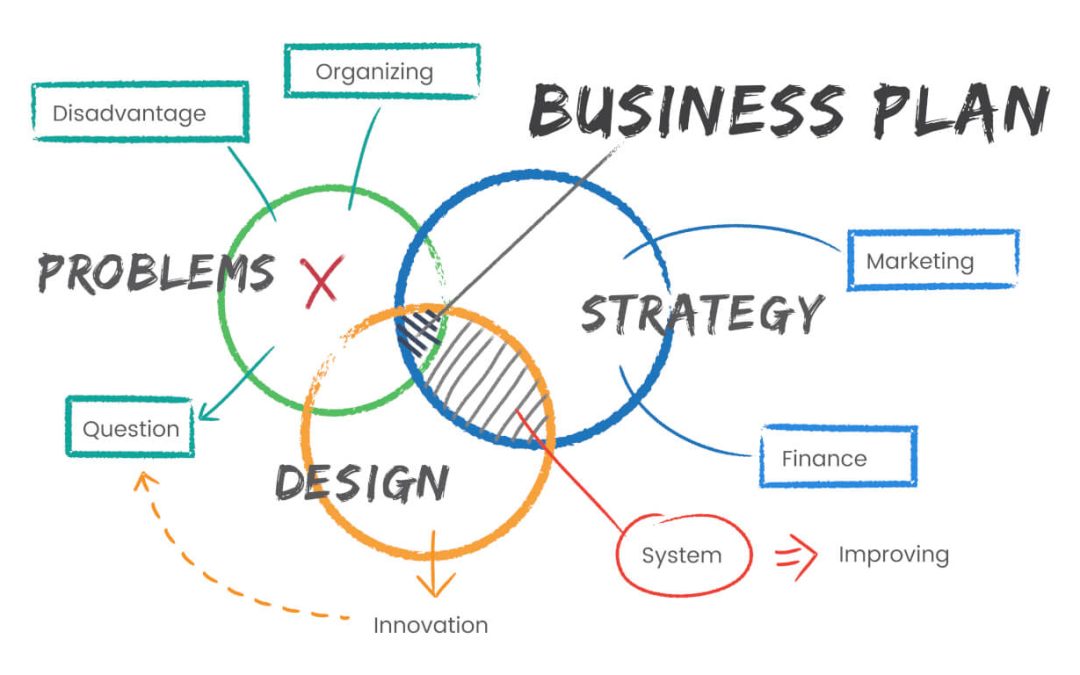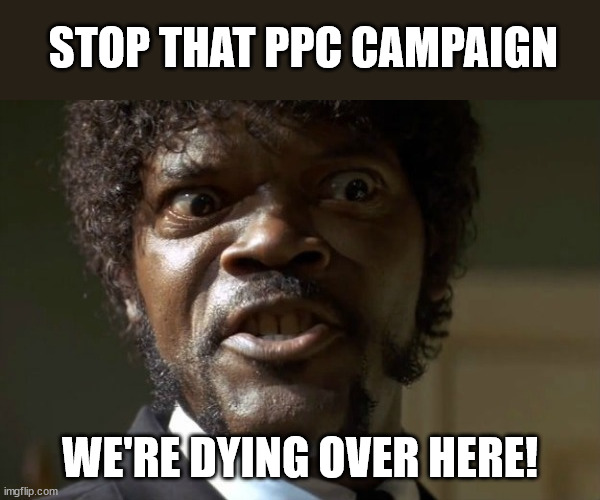Do you know what makes a good copywriter exceptional?
It’s all about how often they consider the user intent when constructing their user intent copywriting strategy.
Copywriters are not just writers; they have never been. Copywriters need to do insightful and critical research, know a lot about page optimization and maybe the most important one, constantly improve their knowledge about intent their user might have when searching for information online.
Easier said than done.
Most of the business owners or even copywriters themselves put the user intent on the margin. And, more often than usual, they follow certain social media marketing strategies or use a specific set of keywords – rarely considering the intent of their users.
Honestly, when was the last time when you’ve put your users above all else?
If you need to think too much about it, perhaps it’s been too long. That alone might be the reason why your business is failing to grow.
That’s the reason why in this blog post, we’ll focus solely on your users and develop successful user intent copywriting strategy.
Although this user intent copywriting is not happening at the moment, in the next few years, it sure will.
You might have your doubts about this, and they are perfectly understandable. On the other hand, we do make some excellent points, which can only bring the best out of your copywriters and your business itself.
To illustrate, we’ll start with the basics – what is user intent?
What’s The Deal With User Intent?
User intent, also named as ‘query intent,’ is the desire or goal the user has on their mind when performing a search.
If you are a quick thinker like myself, the thought that comes to mind after reading this is – how many searches per day are there on the Internet?
Well, since Google is the leader on the online search market with its 92.86% of the market share, we’ll see what the stats are saying about this search engine.
The Hercules of the search engines is not really talking when it comes to showing its numbers.
The last time Google has given any credible statement about searches was in 2015 when they stated that around 3 billion searches per day are made or roughly around 1 trillion searches per year.
According to the numbers at internetlivestats.com, this is still true (in a ballpark, of course).
To fully understand the term ‘user intent,’ let’s see the following example:
Bohemian Rhapsody is really ‘the topic’ these days.
So, if you Google the term ‘bohemian rhapsody’ it might give you results on the song and the movie, the director, the cast, the IMDb rates – all of it.
If you type ‘bohemian rhapsody movie’ it will show all the relevant information about how the movie was made, the actors, other movies made about the band Queen, etc.
And lastly, if you type ‘buy bohemian rhapsody tickets’ it will give you results of the cinemas in the city where you can go to watch the movie.
Do you notice how the wordings change corresponding to the user’s desires?
The more specific need the user has, the more specific words they will use.
This is of interest for every copywriter to know – what is the user trying to achieve when they conduct a search query?
This knowledge is extremely important for your user intent copywriting strategy to be complete.
I know what you are asking yourself right now…
Why Is The User Intent Important For Developing Masterful User Intent Copywriting Strategy?
The answer is actually pretty simple – when you understand the user intent, your business understands your user’s emotions. And that’s what every business is striving to do… unfortunately not all succeed.
Understanding the user’s emotions is in direct line with analyzing the user intent stages. Meaning, users are using different words in the search queries when going through different stages.

Let’s see what those stages are and how to recognize them:
Informational Stage
In the first stage, your users are searching for general information.
Their user intent is strictly informational. Usually, they are not familiar with the topic and are hoping to find relevant or helpful info.
For example, Jane wants to find out more about tools that can help her manage her social accounts easier and faster. She doesn’t know if there’s any solution to it, but she starts her research on Google.
At this stage, users don’t know brands name, products or services of any kind – they might get the feeling they are looking for a needle in the haystack. However, they believe that the answer to their question is somewhere on the Internet.
How To Identify Informational Intent Queries?
Like any type of query – it’s done with the keywords.
The keywords used in this stage are detailed explanations or more than two words used in the search query like:
- How To, what is, why, where, who, etc.
- No use of any technical keywords
- Problem with, fix the, etc.
The type of content that should be created in this stage is informational, but be patient, and we’ll explain that in more detail later.
Navigational Stage
The second stage is the one where user intent revolves around specific websites, people, products or services. At this stage, the users are aware there’s a solution to their problem, and they are in the ‘search mode’ for a specific solution.
How To Identify Navigational Intent Queries?
The keywords used at this stage are more specific.
For example:
- Brand names, brand websites, people of that industry
- Company, Manufacturer, Solutions, Features
- Somewhat technological phrases
Since this is the second stage, where you as a company may satisfy the user intent, this is the place to attract users’ attention.
At this stage, the users are reading more, trying to compare brands, products, and services. Because of that, it’s absolutely crucial for you as a company to be actively present on social media.
Transactional Stage
The third and last stage is when the user intent reaches its peak – the users know exactly what they want and are ready to close the deal.
In the digital marketing world, closing the deal doesn’t always mean something needs to be bought. Sometimes, closing the deal is subscribing to a newsletter, giving the email address for further communication, attending to a webinar, etc.
How To Identify Transactional Intent Queries?
The user intent at this stage revolves around comparing notes, meaning:
- Watching videos of how to use the product
- Comparing products or services
- Reading or watching reviews
- Investigating through forums
- Downloading content
- Reading testimonials
The user intent at this stage is all about doing detailed research and leaving no stones unturned. The users are planning to give you something personal, whether it is their time, money or personal information. Likewise, your company should give them something valuable in return.
If you are asking how to achieve all of this, we have the answer in the next paragraph.
Set Up A User Intent Copywriting Strategy With User Intent On Mind
You might ask: So, what to do with all these pieces of information about user intent?
You put them into good use, piece by piece. What I mean is, you should implement all that you’ve learned so far in your user intent copywriting strategy.
Why?
Even if you have the best copywriters in your marketing team, if they are not writing according to the user intent, the copy won’t be a big hit among your users.
Sure, it will provoke a few shares on social media, maybe even gain some comments. However, that’s not the way to increase your conversion rate.
The recipe for that is different, and we have it right here:
Take Your User Persona In Consideration
Every time your team is writing a copy, they should have your user’s persona on their minds.
Or in front of them.
I remember when I wrote my first sales letter. I printed an image which was an accurate presentation of our user, and I’ve put it in front of me. That way, when I wrote the letter, I had the feeling like I was talking to my user. It might seem funny now, but it was necessary then. And, as it turned out, very successful.
Your team, of course, doesn’t have to print any images. But they need to remember who are they writing to.
This blog post can be of great use to remind your copywriters why are user personas so important in the first place.
So, if you have your user persona laying neglected somewhere on your desk, now is a good time to take it out. If it hasn’t been updated for a long time, you should do that first.
And while you’re at it, use every possible resource to gain information:
- Public or private debates to collect insights
- Surveys, polls, personal interviews
- Use your web analytics
- Use social media

Creating Content For User’s Emotional Stage
So now you know that the search users are performing depends on their user intent.
Remember, there are three user intent stages so be careful to use a specific user intent copywriting technique for each of them.
In the Informational stage, every type of content which is educational is good to go – blog posts, e-books, educational videos. This is the stage where the user intent is all about getting valuable pieces of information from credible sources.
The second, Navigational stage is the one where your copywriting team has a chance to shine. Bear in mind that the attention span of your users is shorter than that of a 4-year old. That’s why at this stage is crucial to create content that will grab users’ attention easily. The type of content you could use at this stage is:
- Webinars,
- Newsletters,
- Case studies,
- Technical content that describes your service,
- Any type of content that puts your brand name in the spot.
The last one, Transitional stage is the one where you have already won over the user, but you need a few more things for the final ‘punch.’ Those ‘few things’ could be the right type of content such as comparison blog posts, testimonials, reviews – all of which can help satisfy the user intent at this stage.
Again, your user intent copywriting strategy should be in line with the needs of your users, not yours as a business.
And, how to discover what your users are searching is the third thing you should do to provide a more valuable copy.
Keywords Relevance For Crafting A User Intent Strategy
The search queries change depending on the user intent stage.
Let’s go back to the example in the intro, about ‘bohemian rhapsody.’
Assuming this is the first time someone hears about this and they conduct a search query (although that would be pretty hard knowing that Rami Malek won his first Oscar for the role, but we don’t judge).
So, they type in the search engine, preferably Google, to see what the fuss is all about.
Here’s what they will see:

Google provides several choices, assuming one of them is the one you are looking for.
However, if you type in ‘bohemian rhapsody movie,’ the search results are different:

The search engine understands that you are conducting a query which is much more focused than the previous one.
But look how the results are becoming even more detailed if you type in ‘bohemian rhapsody tickets new york.’

Users are doing this same thing for any type of question, problem or decision they are making.
Nonetheless, you need to remember that your users don’t really care about your keywords.
They care about getting answers to their questions. This is the reason why the user intent copywriting strategy needs to answers the user’s need – so your website or page can be shown among the first choices on Google.
What every user wants to see from brands is genuine care and understanding of their intent and needs.
We have one brand like that right here. It’s called WebMaxFormance.
How Can WMF Help Your Brand Apply Lasting User Intent Copywriting Strategy?

Nobody has succeeded alone.
It’s even more challenging to do so in this search-driven society with a user’s attention span of a 4-year old kid.
Plus, you have your competitors breathing down your neck, and that’s not a pleasurable experience.
What we suggest is a team that has proven its set of skills, knowledge, and experience to do the work for you.
WebMaxFormance is a company of that kind.
We have 10 years of experience behind us, and we helped our clients build a user intent copywriting strategies with long-lasting effects.
Our service includes:
- Analysis of the Competitors: Our team will get an insight into your competitors, see where they fit on the user intent scale. We will make sure to consider competitors’ website, their strategies and their overall online presence so we can develop a better strategy that will cover things they overlooked. And while doing that, we will also develop a strategy that will be in line with your goals as a brand.
- Keyword Research: We’ll do extensive keyword research for different user intent stages. Our attention is towards the user journey process since the users are at the focus of every service and business. Specifically, we use several tools, like Ahrefs, that give us a detailed preview of all types of keywords valid for your industry.
- Content Audit: Do you have content that you don’t want to get rid of but is a bit dated or you feel like it needs to be improved? That is not a problem for WebMaxFormance. If you allow us, we can make that content even better for your audience. Our skilfull copywriters can improve your content, so you don’t have any waste content.
- Blog Content Creation: If you are looking to increase brand awareness or you simply want to provide value to your users, starting a blog is one checked, highly effective way to do so. WebMaxFormance’s team will complete this goal for you as well. Our strategies have proven successful in the past, and we can do the same for your blog content strategy.
- Content Promotion: If the content or copy is crafted, it is still nothing without being promoted. And this is where WebMaxFormance steps in. We’ll choose the channels that will work the best for your brand mission and goals. This setup will help you attract the right audience to see the copy.
- Content Measurement and Performance: And, in the end, without measuring the content performance, our services wouldn’t be complete. Our team will measure the effects of the strategy and see where it’s showing good results and where it needs improvement. The tools we are using to measure the performance of the content are Google Analytics and the master itself, Ahrefs. With these tools, we can see everything related to domain authority, backlinks, the location of the audience and keywords ranking.
Our aim is to make things in the digital world easier for our clients. No matter what your goals might be – increasing brand awareness, attracting a new audience, or driving more conversions, etc. – all these goals are reachable with our team of professionals. We can make all those complicated tasks easy and possible for you.
User Intent Copywriting: Notes To Memorize
And here you are, around 2500 words later.
Hopefully, with this blog post, your copywriters will understand that user intent is crucial for a successful business.
We’ve discussed several things here.
Having knowledge of your users intent can be the stepping stone when developing a strategy is one thing.
Bear in mind that your users go through different stages when they are performing a search in search engines.
And the stages are:
- Informational,
- Navigational and
- Transactional.
Each of these stages is based on different keywords, with a different purpose and goal in mind for the user.
The other thing that we talked about is the process of creating a user intent copywriting strategy.
It’s not an easy task to craft a user intent copywriting strategy, but you can begin with the following steps:
- Take your user persona under consideration
- Creating content for the user’s emotional stage
- Keywords relevance for crafting a user intent strategy
True, it might seem too challenging for you to do it yourself.
That’s why leaving the hard job to the experts may be a smart investment decision.
One expert of that kind is WebMaxFormance.
With 10 years of experience and a countless number of satisfied clients, we have proved our expertise in the industry. Especially when it comes to content creation and developing a strategy with the user intent in mind.
For more information check out content marketing on our website and schedule your consultation today.
We’ll be happy to make you stand out from your competitors.






